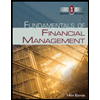Question 1. Suppose that the central bank buys $6 billion of bonds on the open market and the banks wish to hold reserves of 8 percent. A. What is the largest amount the money supply could ultimately increase? Explain. B. What would the money multiplier be in this case? Question 2. Suppose the government multiplier is 3.5, the money multiplier is 4.5, the income multiplier with respect to the money supply is 2.5 and the marginal tax rate is 20 percent. What is the ultimate change in the government's budget deficit G – T if government spending increased by $10 billion and at the same time the central bank increased the money supply by $5 billion? (Remark: not all the information stated above is needed to answer this question. To answer this question you need to figure out by how much output changes, then figure out the change in tax revenue). Question 3. Consider an economy in which the real level of income is $500B in 2010 dollars, the government multiplier is 3, the money multiplier is 5, the income multiplier with respect to the money supply is 2, the current price index is 120 (base year 2010), the current money supply is $200B, inflation is 5%, and velocity is constant. (Remark: not all the information stated above is needed to answer this question). A. In this problem, the velocity of money is B. Ignoring inflation, the change in nominal income resulting from a central bank purchase of $3B bonds is Question 4. Suppose banks face a 15% required reserve ratio and the Fed operates a discount window policy which allows its member banks to meet 20% of its reserves by borrowing from the Fed. If banks prefer to be loaned up (hold 0 excess reserves) one can expect a $18B open market purchase to ____ the money supply by _____, assuming no leakages. Question 5. Circle one response below. "News of economic weakness last week cleared the way for higher bond prices. The New York market moved quickly to capitalize on this good bad news: prices shot up more than a point in minutes." Bond prices rose because A) inflation expectations fell B) higher prosperity is coming C) unemployment is expected to fall D) the Fed is expected to raise interest rates Briefly state why you believe the answer you selected is the correct one. Question 6. “The Federal Reserve announced today that monetary growth for the last quarter was substantially higher than the 1.5% growth analysts expected.” Suppose a 1-year $10,000 T-Bill trading at discount at $9708.74 before the Fed’s announcement fell to $9389.67 immediately after the announcement. Given this information, by how many percentage points (also referred to as basis pointsi ), approximately, have inflation expectations changed. Question 7. Suppose currently an economy is experiencing $2B of extra taxes and $1b lower unemployment insurance payments than what would be the case at its long-run average rate of unemployment. There is a budget deficit of $42B, a publicly-held national debt of $400B, a nominal GDP growth rate of 5%, and an annual seigniorage of $4B. The structural deficit is?
Question 1. Suppose that the central bank buys $6 billion of bonds on the open market and the banks wish to hold reserves of 8 percent. A. What is the largest amount the money supply could ultimately increase? Explain. B. What would the money multiplier be in this case?
Question 2. Suppose the government multiplier is 3.5, the money multiplier is 4.5, the income multiplier with respect to the money supply is 2.5 and the marginal tax rate is 20 percent. What is the ultimate change in the government's budget deficit G – T if government spending increased by $10 billion and at the same time the central bank increased the money supply by $5 billion? (Remark: not all the information stated above is needed to answer this question. To answer this question you need to figure out by how much output changes, then figure out the change in tax revenue).
Question 3. Consider an economy in which the real level of income is $500B in 2010 dollars, the government multiplier is 3, the money multiplier is 5, the income multiplier with respect to the money supply is 2, the current price index is 120 (base year 2010), the current money supply is $200B, inflation is 5%, and velocity is constant. (Remark: not all the information stated above is needed to answer this question). A. In this problem, the velocity of money is B. Ignoring inflation, the change in nominal income resulting from a central bank purchase of $3B bonds is
Question 4. Suppose banks face a 15%
Question 5. Circle one response below. "News of economic weakness last week cleared the way for higher
Question 6. “The Federal Reserve announced today that monetary growth for the last quarter was substantially higher than the 1.5% growth analysts expected.” Suppose a 1-year $10,000 T-Bill trading at discount at $9708.74 before the Fed’s announcement fell to $9389.67 immediately after the announcement. Given this information, by how many percentage points (also referred to as basis pointsi ), approximately, have inflation expectations changed.
Question 7. Suppose currently an economy is experiencing $2B of extra taxes and $1b lower unemployment insurance payments than what would be the case at its long-run average rate of unemployment. There is a budget deficit of $42B, a publicly-held national debt of $400B, a nominal
Trending now
This is a popular solution!
Step by step
Solved in 7 steps with 4 images









